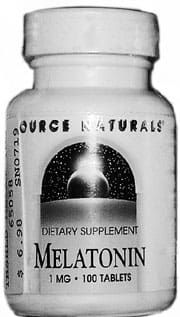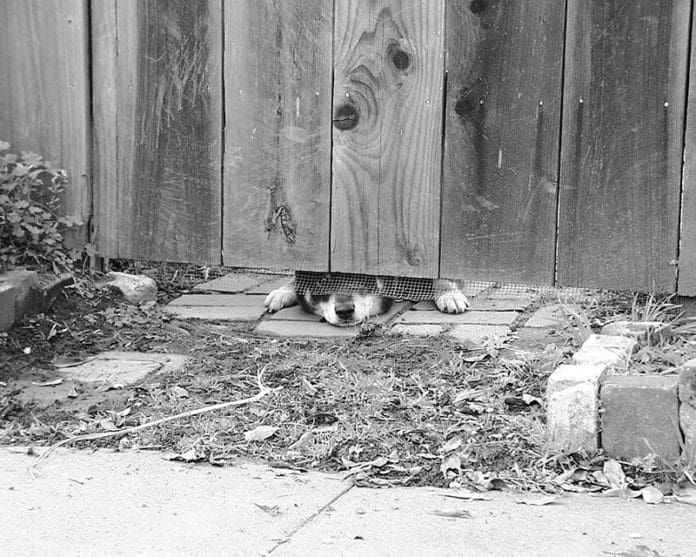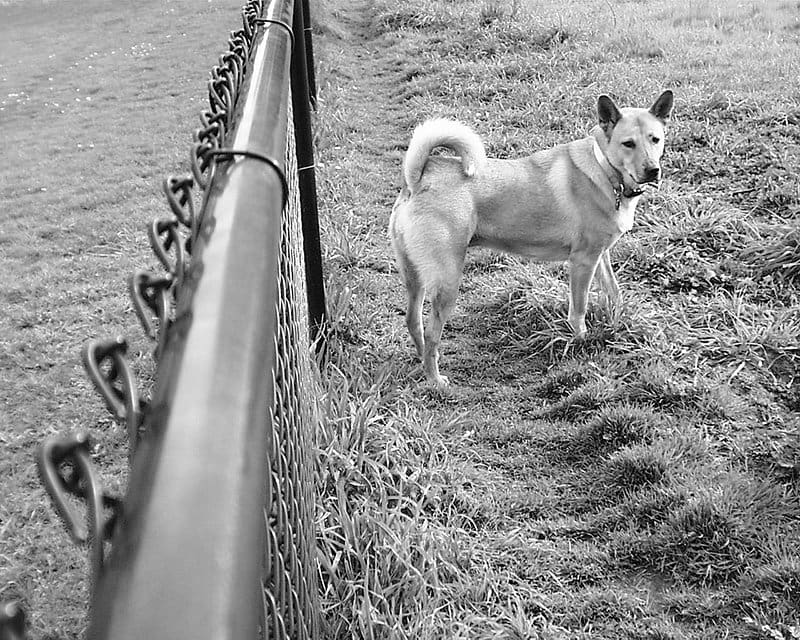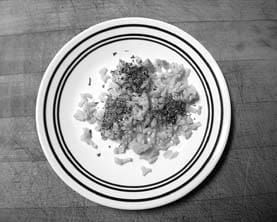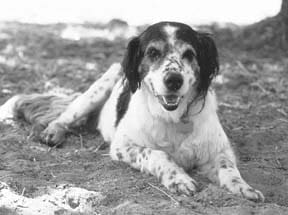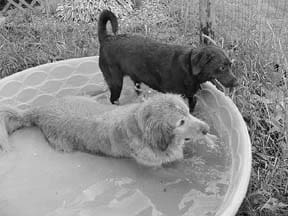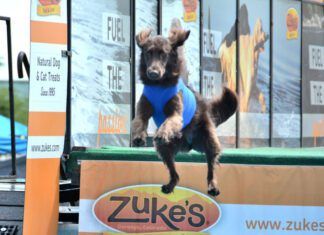FADE TRAINING LURES: OVERVIEW
1. Examine your training routines with your dog to identify where you use prompts.
2. Determine which prompts you are using appropriately in the early stages of training a new behavior, and which ones are candidates for fading.
3. Create a written training program for each prompt you’d like to fade. How will you go about it? What results do you expect?
4. Implement your prompt-fading programs. Keep a daily journal to monitor your progress. Celebrate each time the two of you succeed in fading your prompts from another behavior!
Old-fashioned trainers – those who use physical corrections as a moderate or significant part of their training programs – often criticize positive training, saying that “foodies” (positive trainers) have to bribe their dogs to get them to do things. This is a shallow, shortsighted view of a powerful, effective tool.
It’s true that in the beginning stages of positive training we do use treats, also known as lures, to show the dog what we want him to do. Some positive trainers also use visual signals and gentle physical assistance as “prompts” to communicate with the dog.

But in a good training program, as soon as the dog performs a behavior easily for a prompt or lure, the trainer proceeds to put the behavior on cue. A cue is the primary signal (or stimulus) you use to ask your dog to perform a behavior. When a dog performs a behavior on cue quickly, anywhere, and under a wide variety of conditions, the behavior is said to be under stimulus control.
Many novice dog owners never make it past luring and prompting. As long as they’re satisfied with that level of training, it’s perfectly okay that they will always have to point, clap, or use a treat to get their dogs to perform. It’s their relationship, and their choice as to how well and clearly they want to be able to communicate with their dogs.
However, there is a huge advantage to working with your dog, gradually fading your lures and prompts and teaching your dog to respond to verbal cues or hand signals, until she can reliably perform certain behaviors on cue. Having your dog respond to cues without prompts gives you more security and versatility in your training; your dog will respond even if she can’t see you, or your arms are full of groceries. With enough practice, your dog will even be able to respond appropriately to your cue while “tuning out” potentially dangerous distractions – say, a squirrel chattering at the foot of a tree across a busy street.
If you would like to move on to the next level of training and communication with your dog, by working to “fade” your lures and prompts and teach your dog to respond to verbal cues or hand signals, read on!
Taking Off Your Dog’s Training Wheels
Your dog is pretty well trained. You point to the floor and say “Down!” Your dog instantly drops to the floor. You ask her to sit as you touch her on her back, and she happily responds by settling onto her haunches. You hold a piece of hot dog over her head and say “Up!” and she lifts her front paws off the ground in a lovely performance of “Sit pretty.” Your friends and family are in awe of your training prowess, and comment on how well-trained your dog is. But is she, really?
From one perspective, she certainly is. She knows how to perform a long list of behaviors, and will oblige you by doing them when you ask her to. But from another perspective, she’s not. For each behavior, you’re relying on back-up information to help your dog understand the cue and perform the behavior. You are using prompts.
Prompts are vitally important dog training tools. We use them all the time when we train a new behavior. A lure is something the dog wants – a treat or toy – that you can use to demonstrate to her what you want her to do, by moving it and having her follow. Because dogs are not native speakers of our language, you can use a piece of hot dog or some other tasty tidbit as a “translator” to explain the behavior you want. Because dogs are natural body language communicators, they respond easily to physical and visual prompts.
Anything you use to back up your initial cue is considered a prompt. A food lure is a very obvious prompt. Gentle physical assistance (for example, a light touch on the dog’s back to tell her to sit) is a less obvious but still very visible prompt. Hand signals are cues if they are the initial request for a behavior, but are prompts if they follow or closely accompany the initial verbal cue, such as pointing at the floor when you ask your dog to lie down. Consciously or unconsciously, all of us also use many more subtle prompts, such as eye contact (or lack of eye contact), the way we stand or move, the position in which we hold our hands or tilt our heads – all of these can be backup communications to our dogs when we give them a verbal cue.
The important thing to keep in mind when using lures and prompts is that the longer you continue to use them after your dog has learned a new behavior, the more dependent you both become on them, and the harder it will be to teach her to respond to a verbal cue alone.
Karen Pryor’s Four Rules of Stimulus Control
Karen Pryor is a scientist with an international reputation in two fields (marine mammal biology and behavioral psychology), and the author of many scientific papers and monographs, as well as seven books on animal training.
In her landmark book, Don’t Shoot the Dog: The New Art of Teaching and Training, Pryor suggests that a behavior is not truly under stimulus control unless or until it meets four conditions:
1. The behavior always occurs immediately upon presentation of the conditioned stimulus (the dog sits when told to).
2. The behavior never occurs in the absence of the stimulus (during a training or work session the dog never sits spontaneously).
3. The behavior never occurs in response to some other stimulus (if you say “Lie down,” the dog does not offer the sit instead).
4. No other behavior occurs in response to this stimulus (when you say “Sit,” the dog does not respond by lying down or by leaping up and licking your face).
In reality, very few dogs are under total stimulus control – particularly as proven by Ian Dunbar’s “sit test.” I consider stimulus control as more of a goal that you are always working toward with your dog.
Take the “Sit Test”
Originally developed by Ian Dunbar, a trainer and behaviorist based in Berkeley, California, the purpose of the sit test is to provide an objective assessment of performance reliability for basic behavior cues. This helps to remind us that, frequently, we think our dog “knows” a behavior when, in fact, it’s more likely that our dog knows the behavior reliably in response to our cue (under stimulus control) in a relatively limited scope. To wit: Most of us think our dogs know “sit.” Take the test and see how true this is!
Note: The following test is not the same as the one originally developed by Dunbar, but serves a similar purpose.
1. Front sit: Dog sits on cue facing handler
2. Side sit: Dog sits on cue at handler’s side
3. Chair sit: Dog sits on cue with handler sitting in chair
4. Floor/back sit: Dog sits on cue with handler sitting on floor with back to the dog
5. Handler down/sit: Dog sits with handler lying down on floor
6. Down-sit: Handler tells dog to down and stay, steps six feet away, cues dog to sit
7. Across-the-room sit: Helper takes leash, walks dog across room and drops the leash; handler cues dog to sit
8. Come-sit: Helper takes leash, walks dog across room away from handler, and drops leash; handler calls dog; cues dog to sit when dog reaches halfway point.
A result of 80 percent reliability or better (if your dog sat on the first try in 6-8 of these) is considered excellent. If he sat for 4-5 of them (60-70%), that’s good. You both need work if he responded to the “sit” cue in less than half of the exercises.
Fading the Prompt
In order to fade a prompt, whether it’s a lure or a physical or visual prompt, you need to help your dog fully understand the meaning of the cue itself. At this point in your training the verbal cue is often irrelevant to the dog. It makes you feel good to say “Down,” when you point to the floor, and you may think your dog “knows” the word, but here’s an experiment you can try to see if your dog really understands. Point to the floor without speaking. Chances are your dog will lie down. Now say “Down” without pointing to the floor. Chances are your dog will stand there with a happy look on her face, waiting for you to translate. She doesn’t really understand the word.
If she lies down without the point, then she does understand the word, and you don’t need to point to the floor every time you ask her to lie down. You can fade your prompt just by discontinuing its use, and/or you can also use the “point” as your primary hand signal cue for down, and disassociate its use from the word.
Let’s assume your dog didn’t lie down on your verbal cue. Right now, she knows and understands the “point to the floor” cue as the stimulus for the behavior of “lie down.” In order to give meaning to a new cue, the new cue must consistently precede the known cue. That means every time you ask her to down, you’ll need to use your verbal “Down” cue first, give her a few seconds to think and respond, and then use your “point” cue if she doesn’t respond to the verbal. It’s as if you’re saying, in canine shorthand, “Dog, the word ‘Down’ means the same thing as when I point to the floor.”
Some dogs catch onto this translation very quickly, others take some time. If you don’t feel you are making good progress, try these two things:
• Wait longer after you give the verbal cue before you give the prompt. As long as she’s still focused on you and the wheels seem to be turning in her doggie brain, have patience, and give her time to think it through. If you lose her attention, try again with another verbal cue, but don’t wait as long to prompt. Experiment with varying waiting times before giving the prompt. The longer you’ve been prompting, the more repetitions and practice sessions it may take her to catch on to the new concept.
• Gradually fade the prompt itself. Give your verbal cue, wait a few seconds, then point, but point less than you normally do. If your pointing finger usually ends up nine inches from the floor, stop 12 inches from the floor and see if she lies down. If she does, do several repetitions at 12 inches, then try stopping your point 15 inches from the floor. Gradually diminish your point until you are no longer pointing at all.
You can follow this fading program for any of the prompts you use. If you usually get her to sit by touching her back, say “Sit” first, then give her time to think and respond. If she doesn’t sit, go ahead and touch her back, but more lightly than normal, to elicit the sit. You’re saying, “Dog, the word ‘Sit’ means the same thing as this touch on your back.” Gradually fade the amount of pressure in the touch until you aren’t touching her at all.
Dogs Communicate with Body Language
When you’re fading your prompts, remember that your dog doesn’t know the word – she only knows the prompt. Dogs communicate primarily through body language, and it can be difficult for them to learn words, especially at first. It’s easy to get frustrated – spoken language seems so simple to us – but have patience. She’ll get it. Once you work through a couple of prompt-fading exercises it will come more and more easily with each new cue you teach her. I often wonder how frustrated our dogs get with us because we’re so dimwitted about understanding their body language!
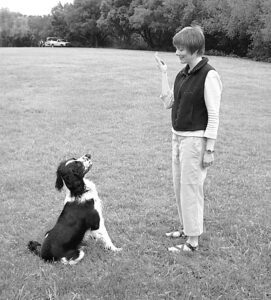
In fact, if you watch your dog closely, she may give you body language clues that she’s beginning to understand the word. Many dogs, when they are starting to grasp the concept of “down,” will glance at the floor when they hear the verbal cue, as if they are saying, “I know that word has something to do with ‘down there,’ but I’m not exactly sure what.” Take heart; this means your message is getting through!
When you see her glance at the floor, tell her “Good girl!” and help her with your prompt. You’re telling her “That’s it!” Remember that it will speed her learning if you use a marker – such as a click! of a clicker or a verbal “Yes!” – and give her a treat when she lies down, even if you had to prompt.
Another body language message she may send you is to go partway down and stop, then look up at you. She’s saying. “Is this it? Is this what you mean?” Again, you’ll speed her learning if you acknowledge her question with a “Good girl!” and a prompt to help her lie down the rest of the way. Then click! and treat.
Note: It’s important not to click! and treat until she is all the way down. Your “Good girl!” tells her she’s on the right path; the click! and treat mark the performance of the complete behavior. If you click! the partway behavior, she will think she is only supposed to go partway.
Be Mindful of Your Unintentional Prompts
Anything you do as a regular part of a behavior cue is an unintentional prompt. If you always have your dog facing you when you ask her to sit, then she’ll think facing you is part of the “Sit” ritual; your position is a prompt. If you always bend your knees and lean forward slightly when you ask your dog to lie down, those movements will be unintentional prompts that help to translate the verbal “down” cue to your dog.
If you took the “sit test” (see “Take the Sit Test,”, above) and learned that your dog is highly reliant on unintentional prompts, you now know how well your dog really knows the “Sit” cue. You can create similar tests for other behaviors, such as “Down” and “Come,” to help you discern whether your dog’s behaviors are really under good stimulus control.
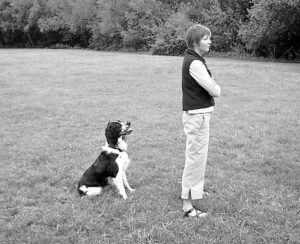
Another helpful exercise is to have someone videotape you while you’re doing a normal training session with your dog. Watch the video afterwards, and pick out several body movements or positions that you consistently use with some of your commonly used cues. Now go back and work with your dog again, making a conscious effort to eliminate two or three of those cues. See if your dog is less responsive to your verbal cues when you take away your unintentional prompts.
If your dog doesn’t sit when you ask but seems otherwise focused on your training exercises, it’s likely that you’ve made a subtle change in your prompt. Many people in this situation jump to the erroneous conclusion that their dogs have chosen to deliberately defy them, and they give their hapless companions a “correction” for their “disobedience.” Poor dogs! If your dog stops performing a behavior you think she “knows,” examine your unintentional prompts and see what you might have changed.
Subtle prompts are not a bad thing, just something to be aware of. In fact, obedience competitors make good use of a wide variety of prompts to back up their legal obedience ring cues. Some make it a point to always start off on one foot if they are asking the dog to heel with them, the other foot if the dog has been asked to stay. Many competitors fold their arms across their chests to emphasize their stay “commands” from across the ring, while their arms are relaxed at their sides as required by obedience regulations for a recall from a stay. You may decide to use prompts deliberately on certain occasions as well – nothing wrong with that!
Fading Treats as Lures
Using treats in training is not “bribery.” In early stages of training as described above, treats are lures; after a dog knows how to perform a behavior, when given after the fact to reinforce that behavior, treats are rewards.
Still, there’s value in minimizing the use of treats so your dog doesn’t expect one every time she performs. When your dog gets a treat every time she sits (what’s called a continuous schedule of reinforcement), she comes to expect one every time she sits. Ask her to sit a few times without a reinforcer, and she may stop sitting on cue because it’s no longer rewarding to her to do so. When an animal stops performing a behavior, it’s called extinction.
When you gradually reduce the frequency of treats so that she gets them randomly and occasionally but not every time (in what’s called a random schedule of reinforcement) she’ll keep sitting when you ask because she knows it will pay off eventually – like putting quarters in a slot machine. Putting a behavior on a random schedule makes it very resistant to extinction and makes it more likely that your dog will respond when you need her to, even if you’ve run out of treats.
That said, I always try to have treats in my pockets so I can randomly reward my dogs for giving me behaviors that I ask for. They don’t get discouraged if they don’t receive a reward for one or two or even a bunch of behaviors, because they have learned that they can count on me to eventually reward them in some way.
Thanks to trainer Sandi Thompson of Bravo! Pup Dog & Puppy Training, in Berkeley, California, for modeling for the photos in this article.







